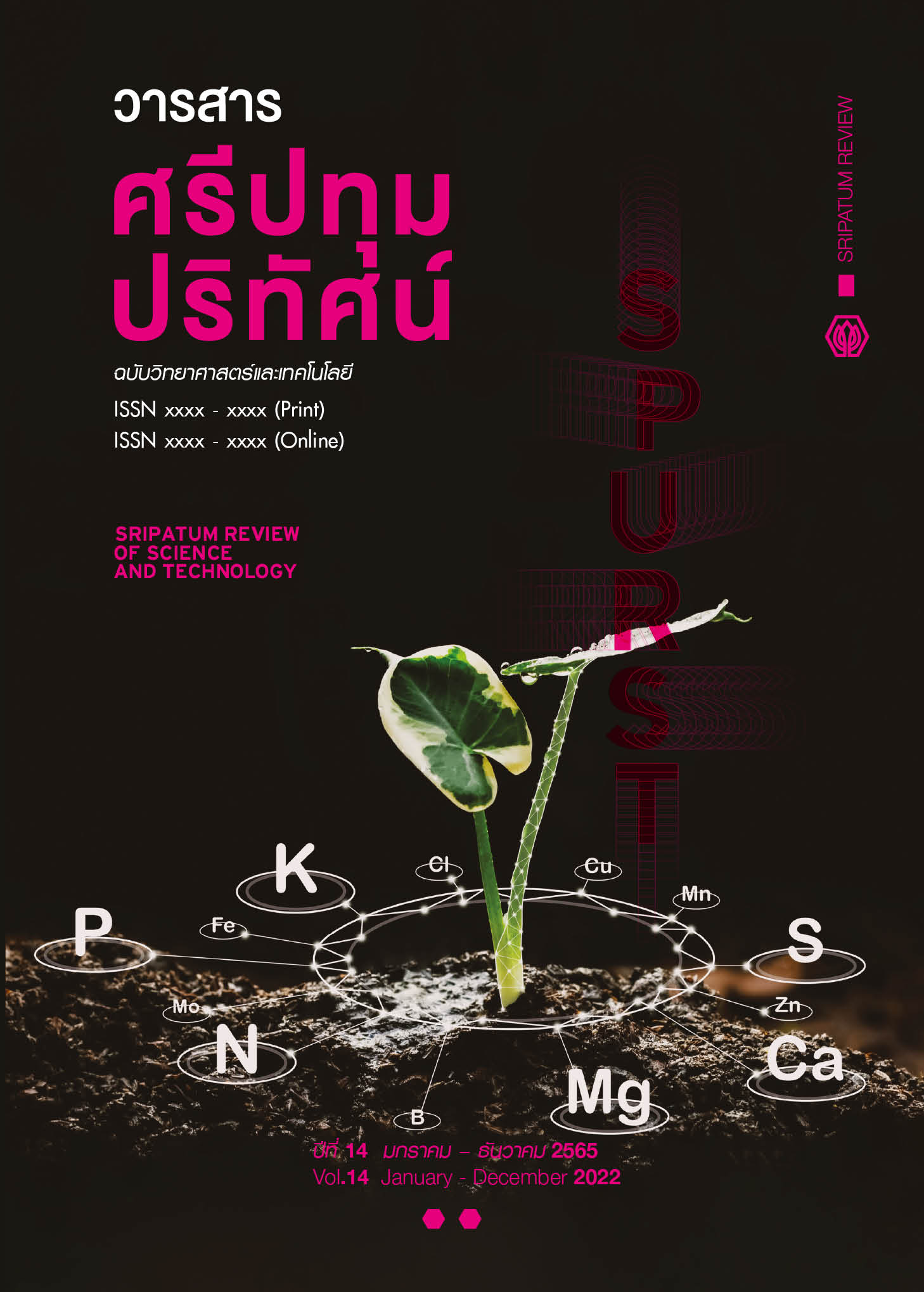Development of Portable Air Quality Monitor Devices and a Real Time Monitoring Cloud-Based System
Main Article Content
Abstract
Thailand now faces many environmental problems, particularly air pollution and particle pollution in many cities. These cities are economic cities and have industrial zones, congestion of people, and heavy traffic. Previous studies showed that levels of Carbon Monoxide (CO) or Nitrogen Dioxide (NO2) exceeded the standards at 30 ppm./hr. or 0.17 ppm./hr., respectively, in industrial zones, or congestion areas. People, who are living in these areas, are facing severe air pollution crisis. Moreover, people rely on the air quality reports but in fact air pollutants are still affecting the people health. People are not aware of the risks and do not keep themselves safe. The average air quality was reported by the Pollution Control Department in a particular area. Based on our survey results, we found that the air quality or the levels of pollution in certain areas is different from the AQI value reported by the department. People suggested that they did not regularly access a web site to see the air quality report. They did not know exactly what pollutants are in the air. They need to see real-time air quality information and request to see proactive air quality information to make people aware of pollution. We proposed the development of portable air quality monitor devices to solve problems. The devices are small. They can provide high-accuracy measurements and can be equipped with the vehicle or mobile unit. They can be used to measure air pollution levels in in certain areas and provide a real-time report. The data from each device is sent to cloud through a wireless network. Government or non-government agencies can make data-driven analysis and decisions, gain more benefits of sharing data, and utilize them with existing data. In this research, standard equipment was designed and developed. The Front-End and Back-End systems were developed to properly manage and store data, link to data sources and visualize data efficiently. The proposed solution in this research differs from prior research. This research serves the following purposes: (1) enhancing climate technology development and transfer, (2) developing open data platform for environmental sustainable development, and (3) serving the country's public health.
Article Details
References
Aekkanat et al. (2019). Data Predictive Model of Thai Air Quality Using Data Visualization Based on national Ambient Air Quality Standards. Proceedings of the 4th International RMUTR Conference, 26-28 June 2019, 1-10. (in Thai)
Chirdsiri et al. (2017). The Study of Indoor Air Quality Affect on The Sick Building Syndrome of Photocopier Operators. Princess of Naradhiwas University Journal, 9(3), 106-120.
Dayanand S. T. et al. (2020). Arduino Uno Based Air Quality Monitoring and Filtering System. International Journal of Engineering Science and Computing, 10(2), 24556-24560.
JunHo, J. et al. (2020). Development of an IoT-Based Indoor Air Quality Monitoring Platform. Journal of Sensors, 20(1), 1-14.
Maturod et al. (2018). Indoor Air Quality in Hotel Buildings and Sick Building Syndrome of Hotel Staffs, Surat Thani Province. Journal of Science and Technology, Ubon Ratchathani University, 20(3), 64-73.
Mohit et al. (2019). Air Quality Index Prediction of Delhi using LSTM. International Journal of Emerging Trends & Technology in Computer Science, 8(5), 59-68.
Morawska, L. et al. (2018). Applications of low-cost sensing technologies for air quality monitoring and exposure assessment: How far have they gone?. Environ International Journal, 116, 286–299. doi:10.1016/j.envint.2018.04.018.
Nurul, A.Z. et al. (2018). Wireless Internet of Things-Based Air Quality Device for Smart Pollution Monitoring. International Journal of Advanced Computer Science and Applications, 9(11), 65-69.
Orawan et al. (2017). Measuring Dust System in the Air on Smartphone Devices.Journal of Information Science and Technology, 10(1), 1-9. (in Thai)
Patricia, A.V. (2019). Accessibility Evaluation of Mobile Applications for Monitoring Air Quality. Springer Nature Switzerland AG 2019, 918, 638–648, 2019. doi.org/10.1007/978-3-030-11890-7_61.
Ratanachuchock P., (2019). Development of Water Quality Measurement Systems Using IoT to Monitor Water Quality through an Application. Sripatum Review of Science and Technology, 11, 78-92. (in Thai)
Senthil Rajan, M.E. et al. (2020). IoT BASED AIR QUALITY MONITORING SYSTEM. International Research Journal of Engineering and Technology, 7(7), 2812-2819.
Yaeseul, S. et al. (2019). Development of a Smart Air Quality Monitoring System and its Operation. Asian Journal of Atmospheric Environment, 13(1), 30-38.


